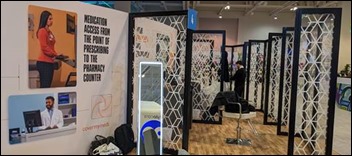Curbside Consult with Dr. Jayne 5/1/23
Over the last couple of years, I’ve been trying to learn more about marketing. It’s a critical part of what we do, whether it’s trying to promote a company, advertise a hospital, or convince patients to adopt healthier behaviors or take advantage of cancer screening tests.
When I was training to become a physician, I thought that it would be about learning all the science and figuring out how to apply that to examining patients and identifying a diagnosis and treatment. Over time, I learned that identifying the diagnosis and making a treatment plan was only half the battle. Convincing the patient to get on board with the proposed plan was a tremendous lift. I learned more about persuasive speech and sales techniques than I ever expected to know, except I was using them to try to convince patients that taking a cheap generic medication to treat their conditions would actually be a better option than the flashy drugs that they had seen advertised on television.
Working for a large health system, I also learned a lot about the ways that organizations market themselves. Sometimes this was productive, trying to increase community awareness about available services. For example, when we launched a mobile diabetes screening unit, there were multiple marketing campaigns to drive awareness and create buzz about the importance of diagnosing diabetes early. Things became more challenging when those patients were actually diagnosed but ran into insurance issues or inability to get the care they needed. I wish that the campaign to launch the mobile unit had included training for primary care offices on how to best handle the influx of patients we were seeing, especially in a startup office like mine.
I also saw plenty of counterproductive marketing efforts, such as when two hospitals that were part of the same health system launched competing orthopedic surgery marketing campaigns, both aimed at the same patient population in the geographic area where I also lived. It seemed like every time I opened the mailbox, I had a competing flyer from one of the programs. Since the flyers had the health system branding as well as the individual hospitals’ branding, I’m sure it was confusing for patients. As a physician who was on staff at both hospitals, it created plenty of confusing conversations with patients and without the requisite talking points that would have been good for staff physicians to have at their fingertips.
This article about Mercy’s personalized healthcare marketing strategy caught my eye. I originally thought I was going to learn something about how precision marketing can help patients, but unfortunately, the first quote in the story left me somewhat baffled. The health system’s chief marketing office, Kristina Dover, stated, “One of the examples I really like to use is that a 55-year-old male OB-GYN should never see our mother-baby advertising if we’re doing our job right.” Actually, I think the midlife, male OB-GYN is exactly who should understand the health system’s mother-baby marketing strategy, because it’s his patient base that is the target of that advertising. Who better to understand a hospital’s advertising tactics than those who are expected to deliver on its promises? Expectation mismatch is a key factor contributing to patient dissatisfaction so that the care delivery team is well-served by understanding those expectations.
Other comments that Ms. Dover made were confusing. She mentioned trying to balance supply and demand through personalized advertisement, by pointing patients to service lines with openings at the time. She is quoted as saying, “We are honestly having conversations every day to say, ‘We have the access for inpatient primary care visits today, let’s increase our marketing or let’s dial back a little bit,’” which makes no sense. I wonder if she can even define what an “inpatient primary care visit” is or whether she understands that you can’t just go out trolling for inpatients as a way to increase your census. As a former emergency department physician, there were plenty of patients that I would like to have been able to admit, but factors like insurance, acuity requirements, and more were always standing in the way. How wonderful that a marketing team has found a way around all of that.
Of course, I’m being facetious, and for Ms. Dover’s sake, I’m hoping this was some kind of misquote or misunderstanding on the part of the reporter. Helping patients understand their healthcare choices is complex, and I struggle to understand how it can be reduced to an Amazon-like shopping experience regardless, given all the drivers such as insurance coverage, acuity, provider experience, accreditations, and more. It’s not exactly a retail commodity, and trying to reduce it to that level might not be the best thing for solidifying a medical home or providing continuity of care that drives outcomes. It’s been a decade since the two marketing examples I discussed at the beginning of this piece happened, but it seems like there is still plenty of dysfunctional marketing out there.
I’d like to get a better understanding of how health systems might take a more informed approach to marketing. Do they consider the opinions of patients, caregivers, providers, and employees as they create their campaigns, or are they created in corporate lock-ins or Madison Avenue-style conference rooms? Do health systems consider previewing their campaigns to their internal constituents so they are prepared for any patient questions, and if so, do they ever make changes based on feedback they receive? Maybe I’ve just been in health systems that didn’t give us a sneak peek, but I’m eager to learn what’s going on in the greater healthcare marketing universe.
I’d also like to learn other opinions on personalized marketing strategies. Are other organizations using different tactics than what the article described is happening at Mercy? Have you found that new strategies have made a difference in how patients and potential patients receive marketing messages? What do you think about hospitals moving towards consumer-focused marketing as a way to drive volumes? Are we all eventually going to be a commodity? Leave a comment or email me.

Email Dr. Jayne.




































Sorry Frank, the AI genie is never going back in the bottle. If history is any guide, you can expect…